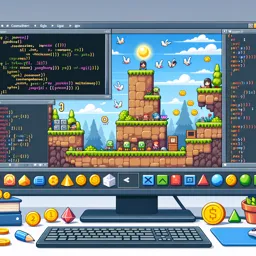Introduction
Unreal Engine is renowned for its powerful capabilities in game development, especially when it comes to producing visually stunning graphics and lifelike environments. Developed by Epic Games, Unreal Engine not only supports developers in creating games that look and feel realistic but also pushes the boundaries of interactive experiences across platforms.
Unreal Engine’s Rendering Power
At the core of Unreal Engine’s visual prowess is its advanced rendering pipeline. Features like real-time ray tracing, physically based rendering (PBR), and global illumination allow for dynamic lighting, reflective surfaces, and intricate details that rival those seen in blockbuster films. This enables game creators to craft immersive worlds that captivate players.
Photorealistic Materials and Assets
Unreal Engine includes robust material editors and asset libraries, facilitating the creation of high-fidelity textures and models. Developers can import photogrammetry assets, use Substance integration for detailed textures, and employ the Megascans library for ultra-realistic props and environments. These tools help developers achieve a level of detail and authenticity that enhances player immersion.
Animation and Physics Simulation
Realism in games is not just about visuals—movement and physical interactions play a crucial role. Unreal Engine offers comprehensive animation tools, from skeletal rigging and motion capture to procedural animation. Furthermore, its advanced physics engine simulates realistic character movements, destructible environments, and believable interactions with objects.
Cross-Platform and VR/AR Support
Unreal Engine makes it possible to deliver breathtaking graphics not just on powerful PCs and consoles, but also on mobile devices and virtual/augmented reality platforms. Developers can optimize assets for different hardware, ensuring consistent visual quality and performance across a wide array of devices.
Conclusion
Unreal Engine stands at the forefront of game development technology, making it the go-to choice for studios aiming to push graphical fidelity and realism. By leveraging its advanced tools, comprehensive libraries, and versatile platform support, developers can bring visually spectacular worlds and experiences to life.
































